As I mentioned back at the beginning of this travelogue, lizards with crazy ornamentation are the primary reason why I have wanted to visit Ceylon-cum-Sri-Lanka since I was a kid. But it turns out that the country is also home to many fine snakes, and we did our best to see a wide variety of them.
Boidae
Family Boidae was represented by this charming little juvenile sand boa. When it got worried, it would hide its head so that nobody could possibly see it.
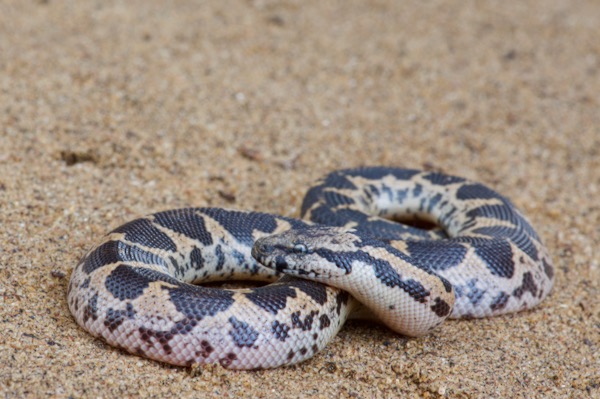
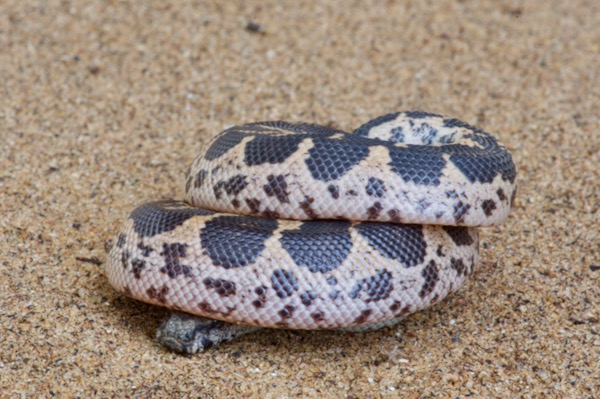
Pythonidae
We stayed in a fancy tented camp in the dry and sandy southeast Sri Lanka lowlands. One of the workers there moved a mattress and found a pretty young python lounging beneath. I don't recall whether or not screaming was involved, but somehow the snake made its way to my guide Udaya Chanaka. Chanaka rewarded the snake for its fine choice of lodging by first removing a large number of ticks from its body and then giving it a quick bath in the outdoor dining area's sink.
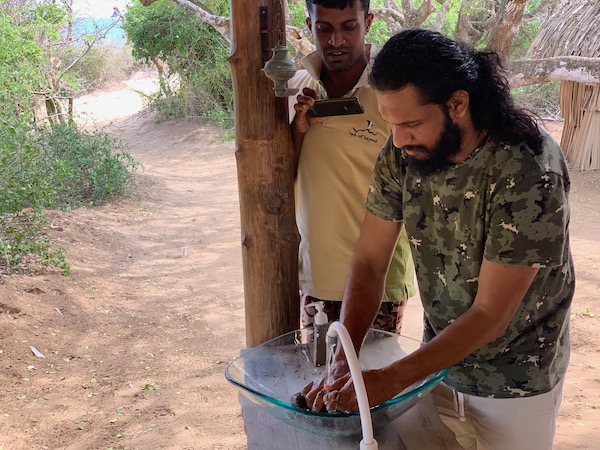
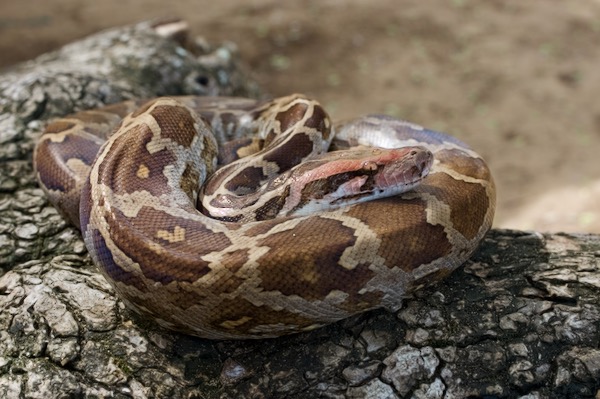
Uropeltidae
At one of our highland destinations, Chanaka put a lot of labor into digging up the grounds of our ecolodge in the hopes of finding fossorial snakes. The effort paid off, as he uncovered a few of these weird little burrowers, members of a small family of snakes that are restricted to highlands of Sri Lanka and India. Some uropeltids, including the species we saw, have a very hard blunt surface on the end of the tail. This strange tail structure gives the family its common English name of “Shield-tailed Snakes”.
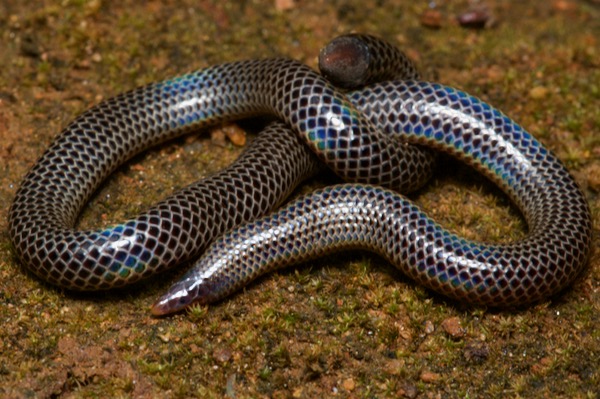
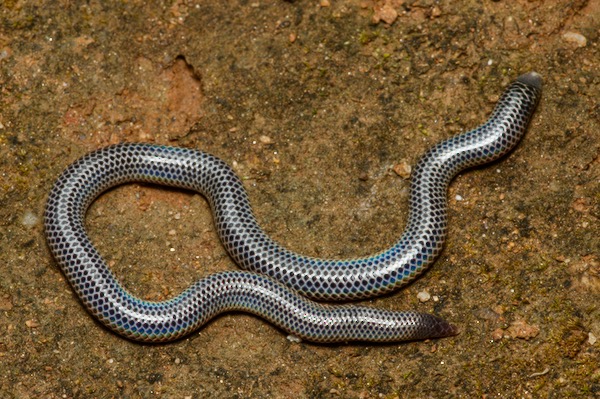
Colubridae
Not all of the weird little burrowing snakes in the area area confined to the family Uropeltidae though. Good ol’ Colubridae has its own collection of small pointy-headed diggers, including at least eight species of Aspidura, of which we saw three.
We found one of these three species in the home garden of a naturalist friend of Chanaka's, under a small planter.
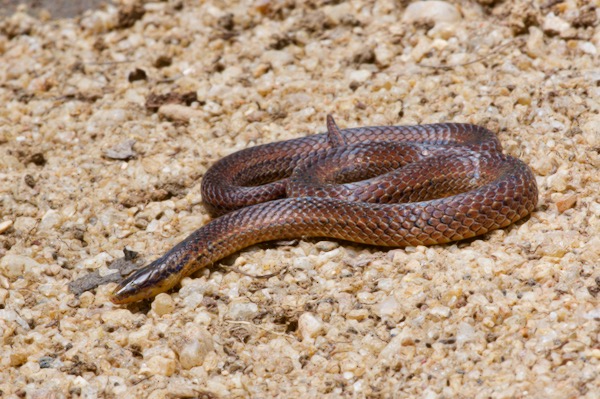
Chanaka dug up a few specimens of another species on the grounds of his Runakanda Rainforest Conservation Center.
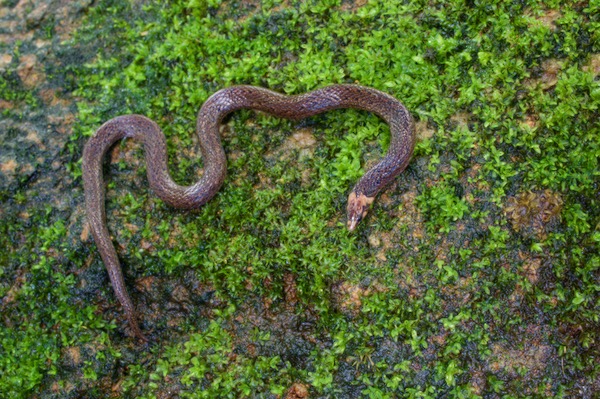
Chanaka and an associate worked hard trying to dig up a specimen of another Aspidura species, which had only been described a few months before my trip and which he had not yet seen. While they were digging, I wandered around looking for critters to photograph. I turned over a few rocks and found a few millipedes, then turned over another rock and found the very snake they were hunting for. Chanaka told me that I was no doubt the first foreigner to ever see this species.
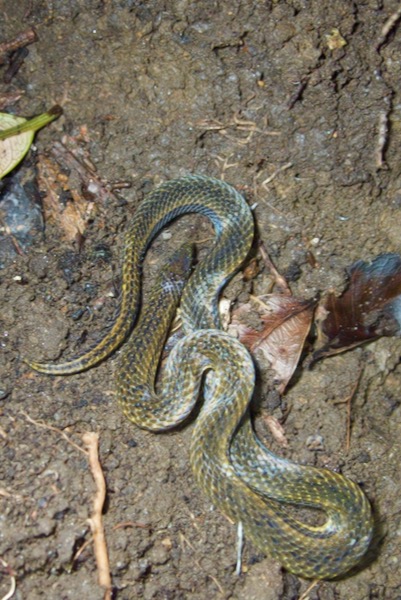
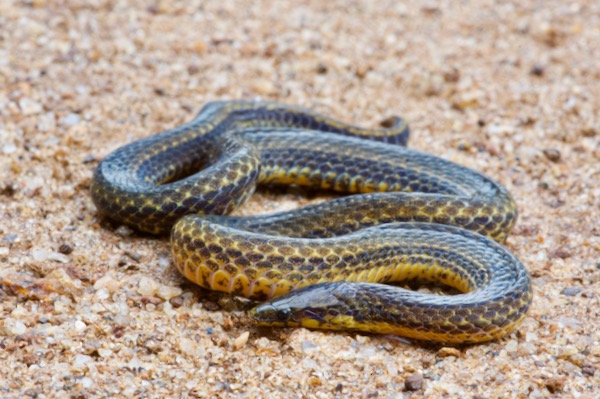
This little guy was in Chanaka's outdoor showering area at our first stop, perhaps looking for the frogs that also occupied that spot.
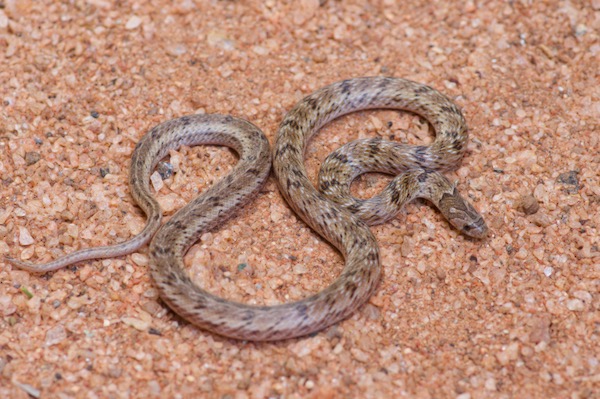
From our tented camp in the southeast (the one with a python under a mattress), we drove to the next camp down the road for dinner one night, and caught this elegant snake in our headlights. Then Chanaka leapt out of the car and caught it in his hands, after pausing just long enough to confirm that it wasn't a cobra.
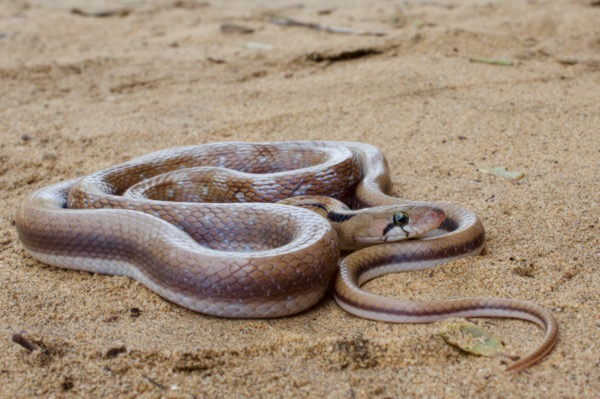
At the same camp, Chanaka heard rustling in the thatched palm leaves comprising the roof of his room, and found this beauty.
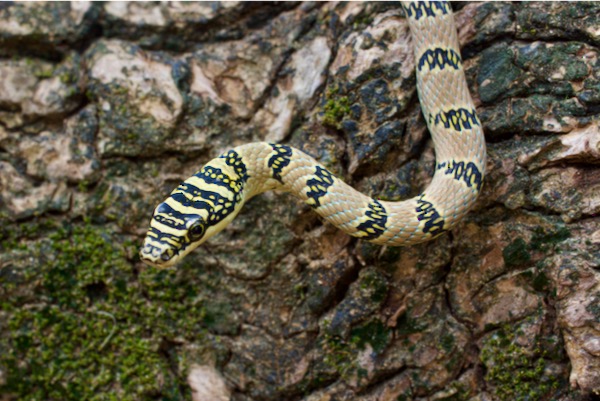
Amphiesma stolatum is the most garter-snakey of Sri Lanka's snakes, in appearance, diet, and behavior.
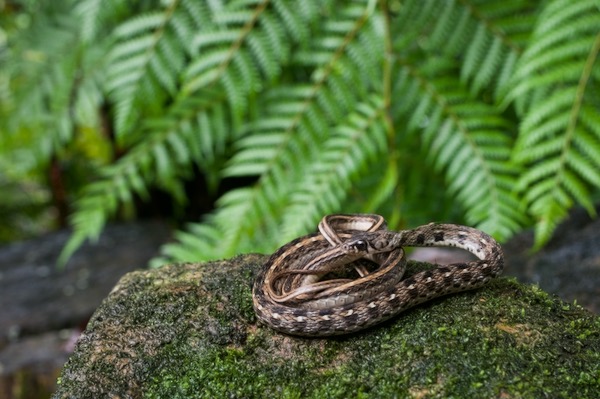
Adults of Rhabdophis ceylonensis, another aquatic species, have only a hint of interesting patterning.
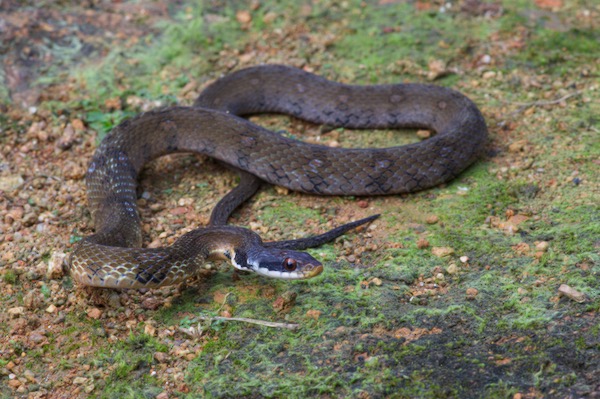
But the babies are just gorgeous.
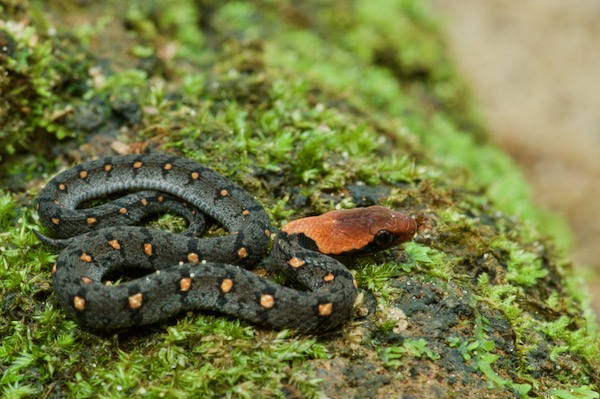
As is true for most tropical areas around the world, Sri Lanka is home to many species of primarily or exclusively arboreal snakes. One common and widespread group of these is the genus Dendrelaphis, a.k.a. Bronzebacks, which range across much of Asia and even into New Guinea and Australia. They are occasionally terrestrial but are generally arboreal, capable of climbing away from you astonishingly fast when you are trying to take their picture. Sri Lanka has four species of which I saw three but photographed only two, (You will never guess what happened when I tried to take a picture of the other one.)
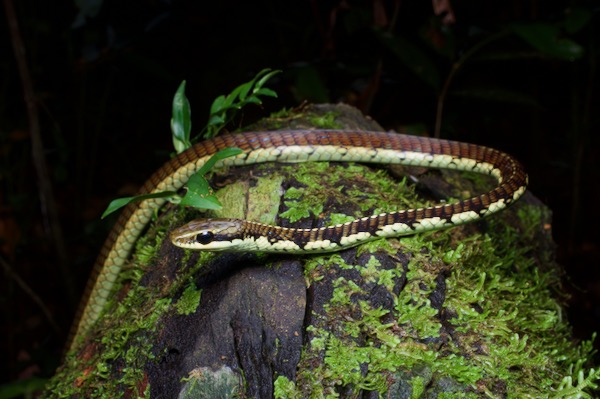
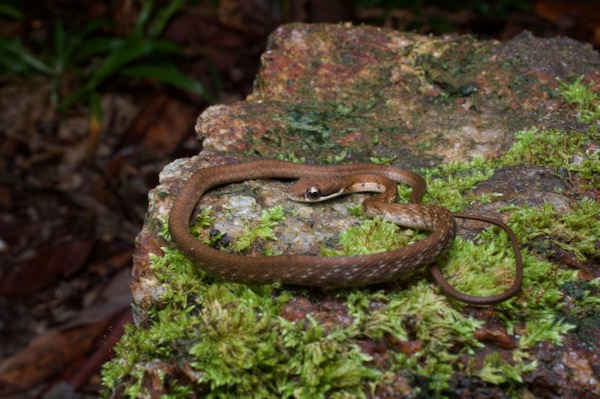
Boiga is another widespread group of primarily arboreal snakes. When disturbed many of them will rear up and threaten to strike, and/or actually strike, and/or bite you over and over again. They are mildly venomous but generally not enough to cause any trouble for humans. I'm not sure I would want to test this with some of your larger and more bitey individuals though. Sri Lanka contains five species and we saw all five. I ordered these from smallest to largest individuals, which is a silly way to order them. Note that the tiniest one and the biggest one are both adopting variants of the same threatening pose. I was not intimidated by the tiniest one, which was maybe five inches long on a good day, and which held this pose stiffly the entire time we photographed it. No comment on the big one.
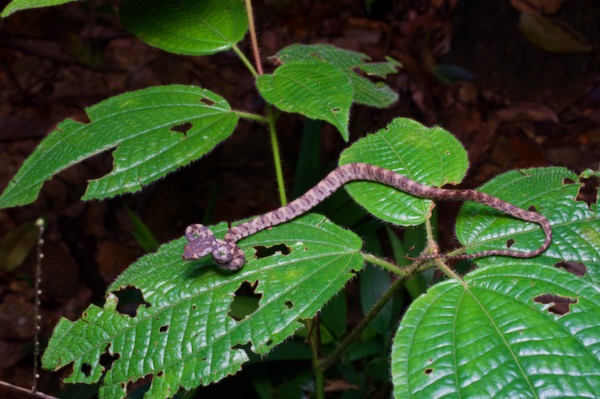
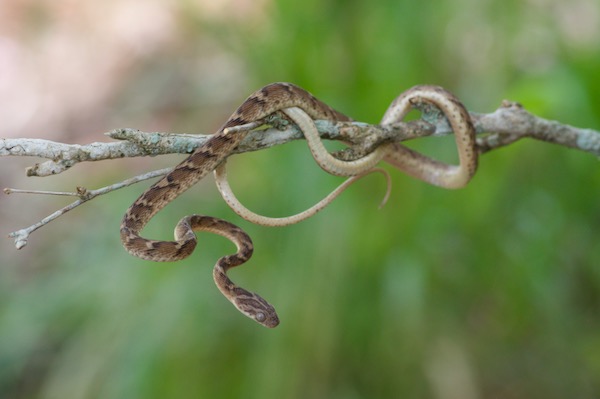
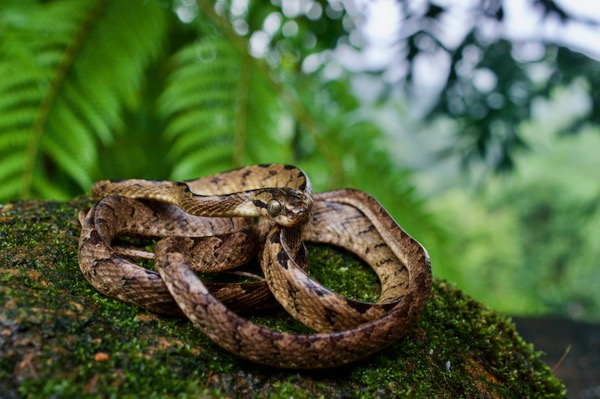
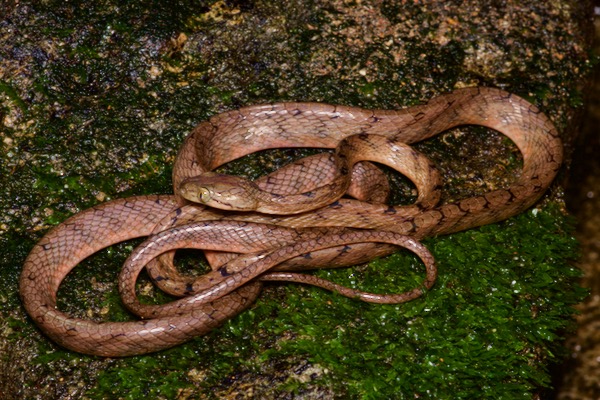
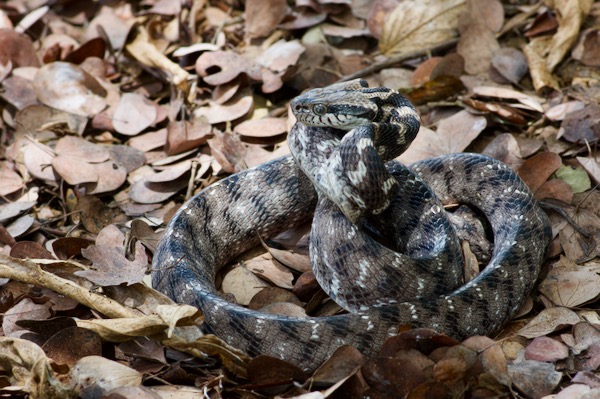
Vine Snakes are the weirdest looking and most perfectly adapted arboreal snakes, with their amazing camouflage in the forest vegetation and their incredibly long and thin bodies, perfect for snagging an unsuspecting sleeping lizard off of a leaf.
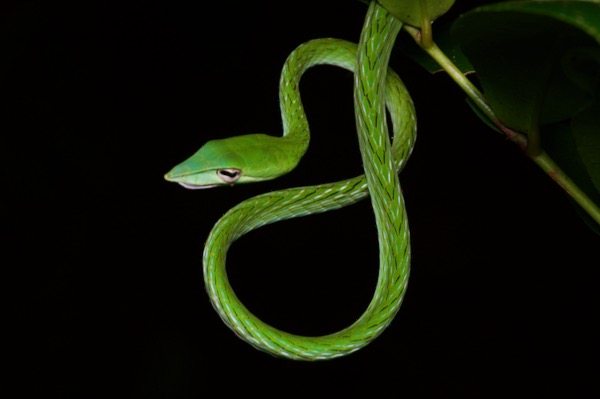
We found this young Vine Snake drinking from this leaf just after a short-lived but powerful rainstorm.
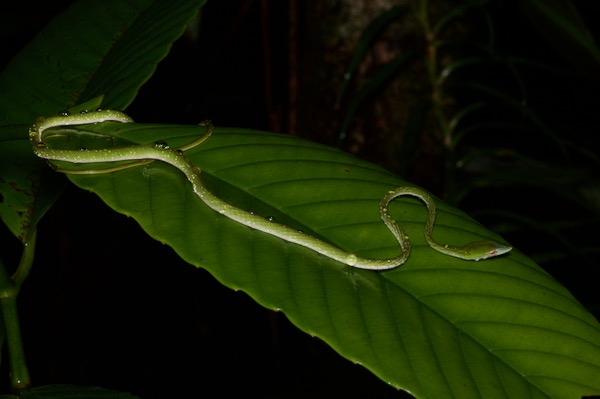
Viperidae
Everyone with a camera loves a viper, because when confronted by a person with a camera, they often hold their position or even coil up into a more compact and thus more easily-framable shape. Also, many of them are colorful and/or have interesting shapes. What's not to like? (Oh, I just thought of something that some people might not like, but never mind.)
Trimeresurus trigonocephalus, Sri Lanka's most common and widespread viper, is typically green with a zig-zaggy black vertebral pattern, but the color and the pattern are both quite variable. This arboreal species is considered only moderately venomous, though it has occasionally killed people.
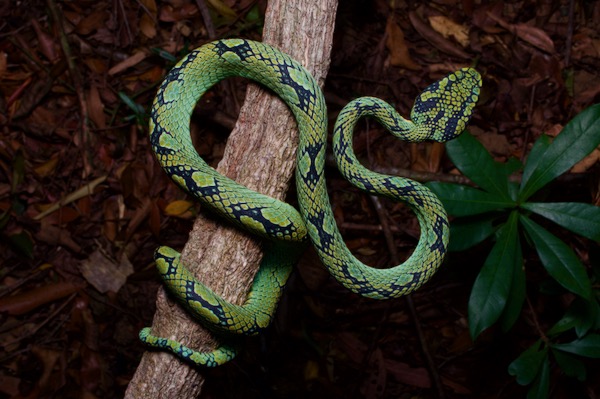
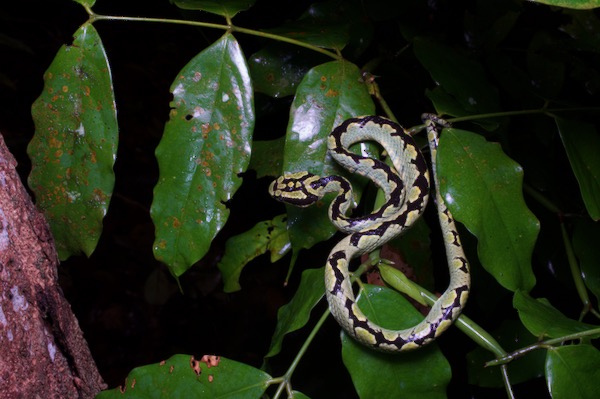
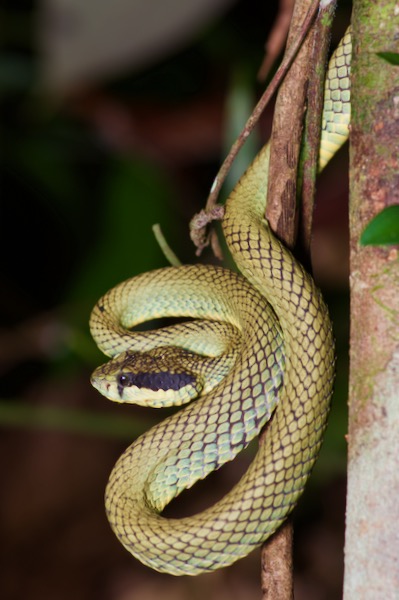
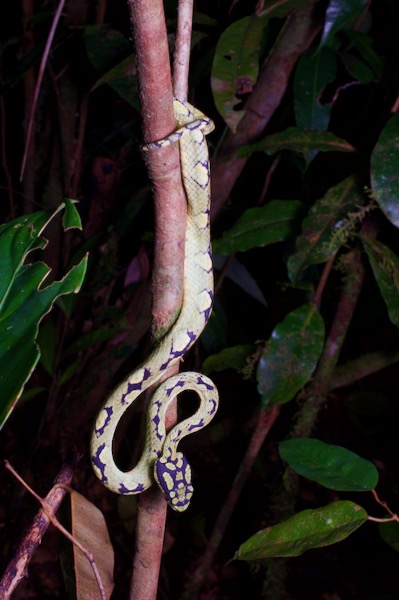
By contrast, Daboia russelii is a highly venomous terrestrial viper that is responsible for most of the life-threatening snake bites in Sri Lanka, among other places. It kills many people every year in Sri Lanka, India, and elsewhere.
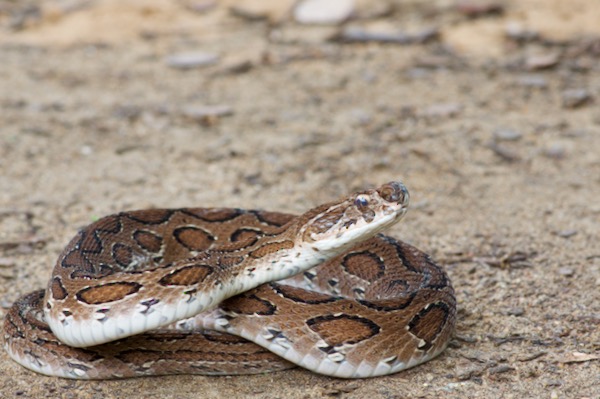
Hypnale is a genus endemic to India and Sri Lanka, comprising three species. Two of these are found only in Sri Lanka, with Hypnale hypnale found in both countries. We encountered only Hypnale zara — one adult and one adorable tiny baby.
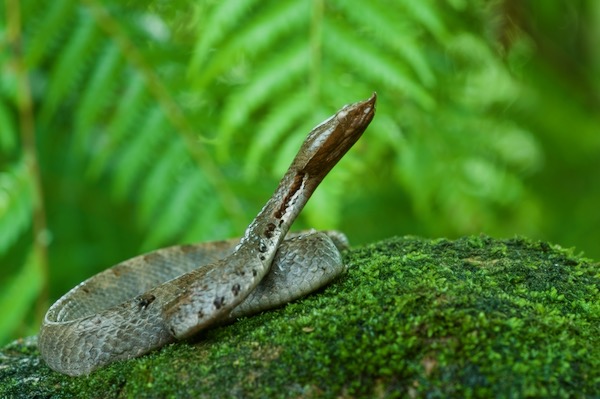
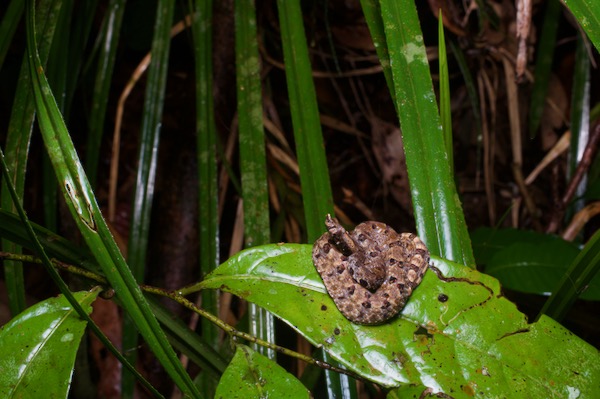
Elapidae
Sri Lanka supports only one measly species of coral snake, and it's a particularly tiny and skinny species at that. It's basically a Tantilla that would cause more pain if it bit you, but it would have a very difficult time biting you with its extremely tiny mouth. Also, they have a reputation of being mild-mannered and showing no interest in biting you. So you'll probably be OK.
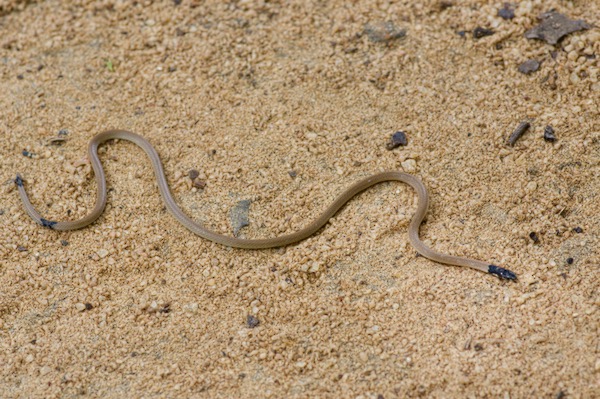
Sri Lanka also supports only one species of cobra, the cobra after whom all other cobras are named, Naja naja. On my last morning in the country I was at my guide Udaya Chanaka's Runakanda Rainforest Conservation Center, eating a delicious snack on the patio, when we heard shouting coming from Chanaka's mother-in-law's house just down the hill. Chanaka grabbed his snake tongs and rushed away as I continued to eat the delicious snack. It definitely would have been rude to abandon the delicious snack, which after all was homemade just for me. A few minutes later Chanaka triumphantly returned with this cobra, which had been poking around the back door of the house below, apparently plotting some sort of home invasion. We took turns taking photos before stashing the cobra away in a big jar. Later that day we released it in a nearby forest. Chanaka explained that he didn't want to release it on the grounds of his conservation center, because he didn't want it to eat any of the many other fine snakes that lived there. Perfectly reasonable.
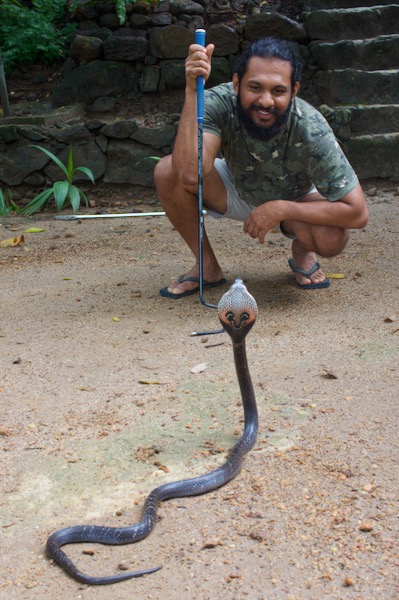
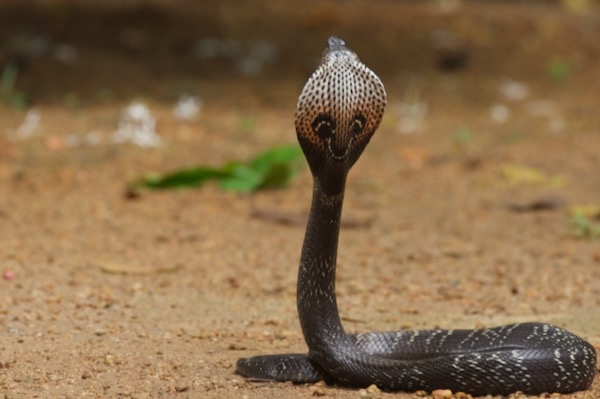
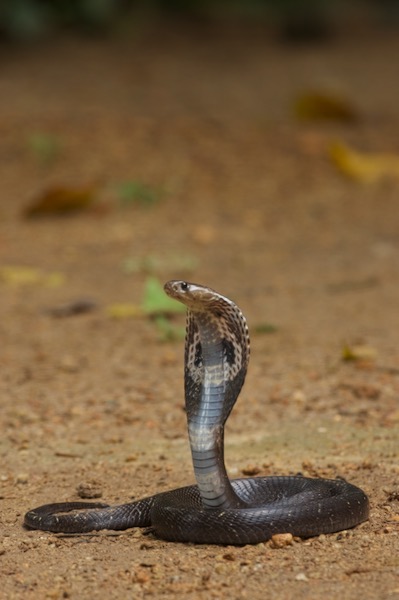
Next: At Long Last, Lizards